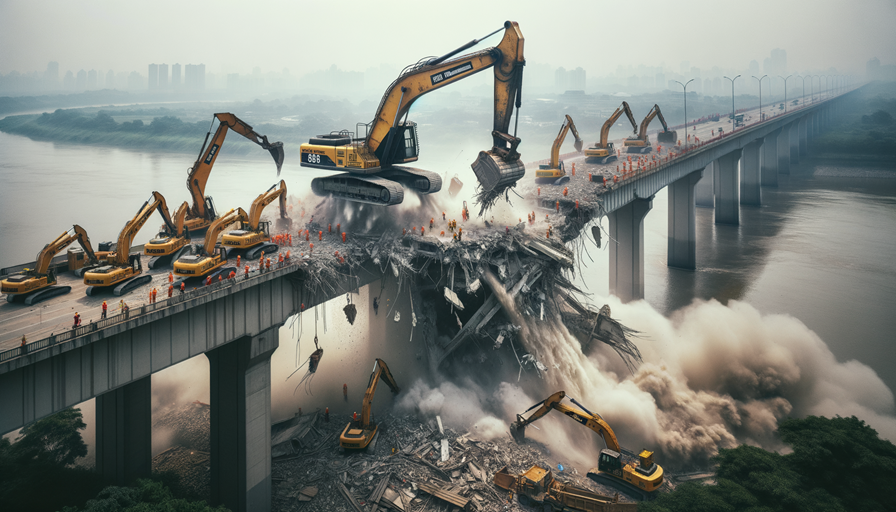Public infrastructure demolition is an increasingly crucial aspect of urban planning and renewal. While constructing new infrastructures is a notable part of growth, the demolition of outdated or damaged infrastructures such as bridges, roads, and tunnels is equally significant. This article will delve into the specialized field of bridges and infrastructural demolition, exploring challenges, techniques, and notable examples.
Challenges in Public Infrastructure Demolition
Demolishing public infrastructure, especially bridges demolition, is a task that presents several challenges:
- Environmental Impact: Demolition of infrastructure can lead to pollution, affecting both air and water quality. Care must be taken to minimize the environmental consequences.
- Public Safety: The demolition of bridges must be carried out in a manner that ensures the safety of the general public, including both workers and bystanders.
- Legal Compliance: Numerous laws govern the demolition of public infrastructure, ensuring that safety and environmental regulations are met. Complying with these regulations requires careful planning.
- Cost Management: Infrastructural demolition can be an expensive endeavor, requiring a careful assessment of methods and costs.
We are experienced Demolition Company based in Melbourne, Victoria that offer top-tier demolition services all around Melbourne and across Victoria, Australia.
For all your Demolition needs contact us to GET FREE QUOTE NOW!
Techniques in Bridges and Infrastructural Demolition
Several advanced techniques are employed in the demolition of bridges and other infrastructures:
- Controlled Explosives: This method involves the use of carefully planned and executed explosives to bring down structures safely.
- Wrecking Balls: Though less common, wrecking balls are sometimes used for smaller bridges demolition.
- Hydraulic Breakers: These devices can break concrete and steel, allowing for precise demolition of infrastructure.
- Cutting and Lifting: This method involves cutting sections of the bridge and lifting them away, typically used in congested urban areas.
Notable Examples of Bridges and Infrastructural Demolition
- Tappan Zee Bridge, USA: The demolition of this bridge utilized controlled explosives, and portions of the bridge were lowered onto barges to minimize environmental impact.
- Genoa Bridge, Italy: After the tragic collapse in 2018, the demolition and reconstruction of the bridge were undertaken with precision and sensitivity to the local community.
- Viaduc de la Concorde, Canada: This bridge’s demolition was an example of how a carefully planned approach can minimize both environmental impacts and public disruption.
Conclusion
Bridges and infrastructural demolition is a highly specialized field requiring careful consideration of challenges such as environmental impact, public safety, legal compliance, and cost management. Techniques such as controlled explosives, wrecking balls, hydraulic breakers, and cutting and lifting are integral to the safe and effective demolition of bridges and other infrastructures. Notable examples like the Tappan Zee Bridge, Genoa Bridge, and Viaduc de la Concorde illustrate the complexity and importance of this field in modern urban development.
By understanding and appreciating the intricacies involved in the demolition of public infrastructure, we can move forward in building a safer and more sustainable future. Whether it’s the demolition of a small bridge or a large-scale infrastructural demolition, each project adds to the ever-growing knowledge and expertise in this essential field.

